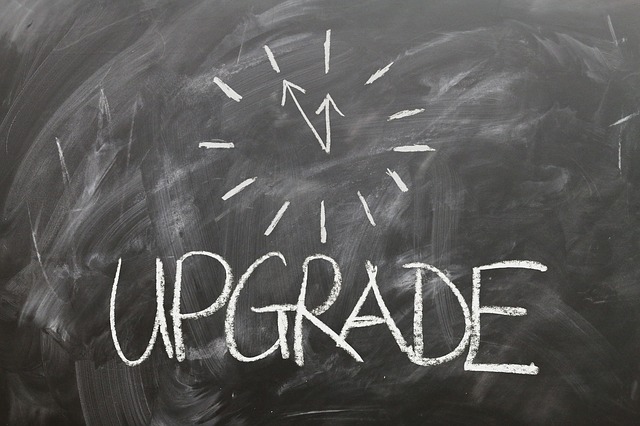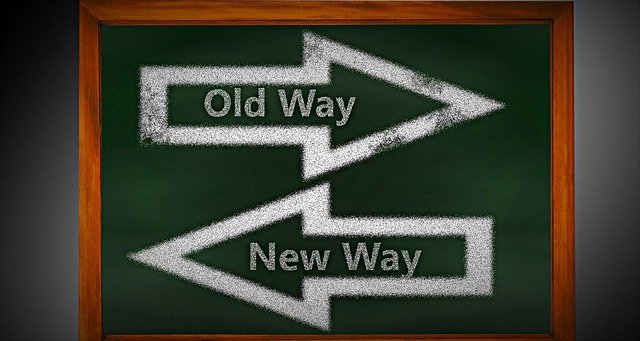Blog/Development
3 Top Legacy System Modernization Approaches

Your system is putting your business at risk, and you haven’t fixed it. Don’t touch what isn’t broken, right? Well, while that may be currently working for you, you are walking down a slippery slope. Legacy systems for long-term business operations come with many risks, and it may be time for a change. We will discuss ways to move on from legacy systems to put your business in a better position.
The best part about this is that you don't even have to take one approach. You can adopt several legacy system modernization approaches.
Let's get started!
What is a Legacy System?
Some people may refer to a system as "legacy" based on several factors beyond its age. One common reason is technological obsolescence. When a system relies on outdated hardware or software, it may be labelled as a legacy because it's no longer aligned with current industry standards or practices. The inability to integrate with modern systems or adapt to evolving needs can also prompt this classification. Another reason is a lack of vendor support or a dwindling user base, making it difficult to find experts or resources to maintain and update the system. Moreover, a legacy system might have a complex codebase that is challenging to understand or modify, posing operational and maintenance challenges.
However, in a more widely accepted definition, a legacy system is a computer system, software, or technology that has been in use for a significant period and has a set of characteristics that make it problematic to maintain, adapt, or integrate with newer technologies and systems. These characteristics include the use of outdated technology, limited vendor support, and difficulties in making necessary updates or modifications.
In simple terms, think of a legacy system as an outdated system, software or platform which is no longer necessary or relevant to your business—relevance in the sense that it does not serve your company’s needs anymore.
The system can be a:
- Software application
- Hardware system
- Network applications, etc
What is Legacy System Modernization?
As established, a legacy system is an outdated system that is problematic to maintain or integrate with newer technologies. So, typically, legacy system modernization is all about updating these outdated systems with modern technologies to reduce risks.
Legacy system modernization is the process of revitalizing outdated software by migrating it to contemporary programming languages, software libraries, or protocols. This transformation is essential to mitigate potential risks associated with the use of obsolete technology.
Why Does Your Business Need A Legacy System Modernization?
Assessing The Risks

In a world of modernisation and technological advancements, holding on to legacy systems comes with its problems. This is because these older systems often lack compatibility with contemporary technologies and can lead to inefficiencies and vulnerabilities. For instance, they may suffer from limited support, making them increasingly unreliable and expensive to maintain. Moreover, legacy systems can hinder innovation and hinder the ability to adapt to changing market demands.
Increased Cost
While some business owners may think that sticking with legacy systems saves costs, that is simply not true in the long term. There’s a significantly higher cost of maintaining legacy systems over time. This maintenance can stem from the inability of your legacy systems to automate software processes that can be done with newer systems. There is also a cost associated with hiring experts to handle maintenance.
Decreased Competitive Advantage
Your legacy systems are not only hindering your processes but holding you back from running in the innovation race with your competitors. New technologies are often birthed to address current market needs. Dependency on a legacy system does no good because it cannot provide solutions to those needs due to its ineffectiveness. This hampers business growth and can sometimes leave the business in a vulnerable position.
Security Risks
Older systems are more vulnerable to security risks and attacks. Legacy systems come with fewer updates and patches, thus making it easier for such systems to be breached. Also, there is a higher tendency of data loss when such systems fail. This leaves your business less safe and secure.
Furthermore, there are regulatory risks associated with compliance. For example, the use of legacy systems usually results in non-compliance because current regulations do not put legacy systems into consideration.
Limited Flexibility
Legacy systems can only support file formats up to a certain point. If business needs require newer and updated formats, such systems won’t be capable of handling such requests.
Why Is Legacy Systems Still In Use?
Now that we are well aware of the risks of legacy systems, the big question is, why do companies/businesses still use them?
Familiarity
Some business owners believe that there is no “real need” for a change if something works. There is familiarity with how it works, and there are no roadblocks when using such systems.
The Fear Of Uncertainty
Migrating from legacy systems to modern systems creates a fear of uncertainty. For sure, no migration is seamless. Sometimes it comes with a lot of bugs that need fixing. Because downtime, amongst other factors post-migration, cannot be estimated by some businesses, they prefer to stick to what they already have that works.
Some business owners are unsure of the systems that best fit their needs. So instead of leaping to an unknown and uncertain destination, they stick to what is already in use.
High Transition Cost
Some businesses are not in the best position to handle the financial burden of migrating to newer systems. This leaves them with no choice but to stick to their current systems.
Moving On From Legacy Systems

Eventually, every system will become a legacy system, although some will take a longer time than others. It’s just a matter of when. With that in mind, let’s talk upgrade! There are different approaches to migration from a legacy system to a modern one.
Before going in-depth, it is paramount to have a good understanding of your existing systems and plans. Having this information at hand will help with decision-making on the approach to be adopted.
This is the initial analysis stage where research has to be carried out. Also, it is best to consult other technical experts to set clear goals. Know that migration is all about strengthening your business processes instead of weakening them.
Know Your Current Standing
It is essential to understand where your business currently stands in terms of the use of its systems. It is best to liaise or consult with technological experts during this stage. This can be carried out in different ways, such as code reviews and testing, market research, etc. The goal is to know where you are and where you need to be.
Evaluate Problems And Set Clear Goals
This process aims to pinpoint the exact improvement areas of the business. This can be done by conducting interviews to measure performance and user experience. This is not limited as you can also use whatever technique you deem best to evaluate problems. When this is achieved, it goes a great deal in choosing the best migration approach and setting clear goals for the future.
Analyse And Choose What Is Best
Now that the other steps mentioned above have been executed, this stage is all about evaluating the different approaches to migration and picking the best one. This is because the different approaches are best suited for different scenarios. This means that the selection process should be well-thought-out, as going with a less suitable approach could be fatal.
Different Approaches To Modernisation

There are three main approaches to legacy systems modernisation. However, the three top legacy system modernization approaches are cloud adoption, Refactor, and Rewrite.
Cloud Adoption
This approach involves migrating your legacy systems and applications to cloud-based platforms, like Amazon Web Services (AWS), Microsoft Azure, or Google Cloud. Cloud adoption offers several advantages. First, it enhances scalability, as businesses can easily adjust their computing resources based on demand, allowing for efficient growth without large upfront infrastructure investments.
Additionally, it improves accessibility, enabling users to access data and applications from anywhere with an internet connection. Cost savings are another key benefit, as cloud services often eliminate the need for extensive on-site hardware and reduce ongoing maintenance expenses.
This is because by leveraging the cloud, organizations can ensure greater reliability, data redundancy, and disaster recovery capabilities. It's a cost-effective and flexible solution for modernizing legacy systems while taking advantage of cutting-edge technologies and services.
Furthermore, another major advantage of this approach is minimal disruption to ongoing processes, and it does not tamper with application architecture. It is a seamless approach that is also less expensive. However, it is not advisable to use this approach if there are significant flaws in the system architecture since there’s minor code modification involved.
Refactor
This approach is much more advanced than the cloud adoption method. This approach involves significant code modification to upgrade the system. It is an excellent alternative for your business if your current systems cannot be further developed.
The refactor approach involves making strategic adjustments to the existing code and architecture of legacy systems without completely rewriting them. It seeks to improve the system's efficiency and maintainability by optimizing specific components or modules. This approach is valuable when the legacy system contains valuable business logic that doesn't need a full overhaul.
Furthermore, the refactoring process typically involves cleaning up the codebase, removing redundancies, and enhancing performance. It may also include integrating new technologies or components where necessary to enhance the system's functionality.
Refactoring allows businesses to retain the core functionality of their legacy systems while making them more adaptable and easier to maintain without the extensive time and cost associated with rewriting from scratch.
It is most favourable when your system needs fresh features or additional code changes for cloud adoption.
Rewrite
Sometimes, a complete rewrite of a legacy system is the best option. This approach involves building a new system from the ground up, taking advantage of modern development practices and technologies. While it is often the most time-consuming and expensive option, it offers the greatest degree of flexibility and future-proofing.
This is because by rewriting the legacy system, businesses can ensure it is designed to meet current and future needs, utilizing the latest programming languages, frameworks, and design patterns. It also allows for incorporating best practices in terms of security, scalability, and user experience. However, it's essential to carefully plan and execute the rewrite to minimize disruptions to ongoing operations and ensure a smooth transition.
Final Thoughts
Migrating from a legacy system may be difficult due to different reasons. However, it is advised that you evaluate your business needs and make that difficult change as soon as possible. Try to identify the best approach your business requires and work with it. Ensure to carry out this change effectively by engaging an experienced and reliable team to make it a seamless process.
At Wazobia technologies, we specialise in developing the best software to meet your requirements. We also offer legacy system migration services to other businesses. Still not sure on what steps to take? Contact us, and we will help you make the right decision for your business.
Related post
Recent Posts
Need help with a project?
© Wazobia Technologies 2025
Powered by:
